Operation Operating Room….. In The Beginning
I didn’t think this would be so difficult. All I wanted to do was extend my prolonged exploration of hands into an arena that I previously had welcomed me, namely the operating room. In 1983 a surgical resident at Johns Hopkins Hospital invited me to photograph him at work. I donned a mask and gown and booties and stayed outside a 10-foot perimeter with my 1950s vintage Yashica-D twin-lens reflex. (Those were the days of B&W 120 film and horizantal-reversed images in the viewfinder.) The photos served as my sketches for five watercolors; three sold; the unsold ones are below.
Sterile Field, watercolor, 1983, 21.5″ x 19.5″ (top); Surgeons, watercolor, 1983, 21.5″ square (bottom)
Then in late 1989, the Anesthesiology Department at Johns Hopkins contacted me. The department head wanted me to do a portrait of a retiring anesthesiologist, who wasn’t aware of the nature of my appearance in surgery. The painting would be a surprise going-away gift. More commissions followed. By July 1991 I painted four acrylics on canvas (the first two were finished during a deep-snow January at the Vermont Studio Colony in the tiny mill town of Johnson) and two watercolors. Below are two of the acrylics. (Sorry for the image quality. I hand-held slides to photograph them.)
Dr. B, acrylic on canvas, 1990, 40″ x 42″ (left); OR, Acrylic on canvas, 1990, 45.5″ x 40″ (right)
So the OR doors swung open in the past. What about today? I began my quest by posting my interests in photographing in surgery on Facebook. A former Baltimore Sun colleague proffered the name of a former Sun reporter now working in PR at Hopkins. I emailed her and soon I was set up to photograph a living-donor kidney transplant operation in a few weeks. I was psyched! For fun, while waiting, I bought a box of thin plastic gloves that mimicked the type used by doctors and had my partner Michael model putting them on one at a time. This effort resulted in two watercolors: one putting on the first glove in three views (not in sequence) and one putting on the second glove in three views (again not in sequence–I didn’t want the paintings to be read from left to right).
One Glove, watercolor, 2013, 10″ x 29.25″ (top); Two gloves, watercolor, 2013, 10″ x 28.375″ (bottom)
But then the Hopkins PR person emailed me: “I hate to do this but I have JUST been informed that our policies regarding photographs and video in the OR are under review and I have to ask you to postpone your filming session. When this is resolved, I am happy to get the ball rolling again. My apologies.” Drats! (in so many words) So now I get the bright idea to contact the Curtis National Hand Center at Union Memorial Hospital. What better place to photograph hands than where hands are working to repair hands? So I start making inquiries there. In the meantime, I decide to do wood engraving variations of the One Glove, Two Gloves paintings. Using both sides of a 6″ x 4″ maple block, I made small editions of the following images:
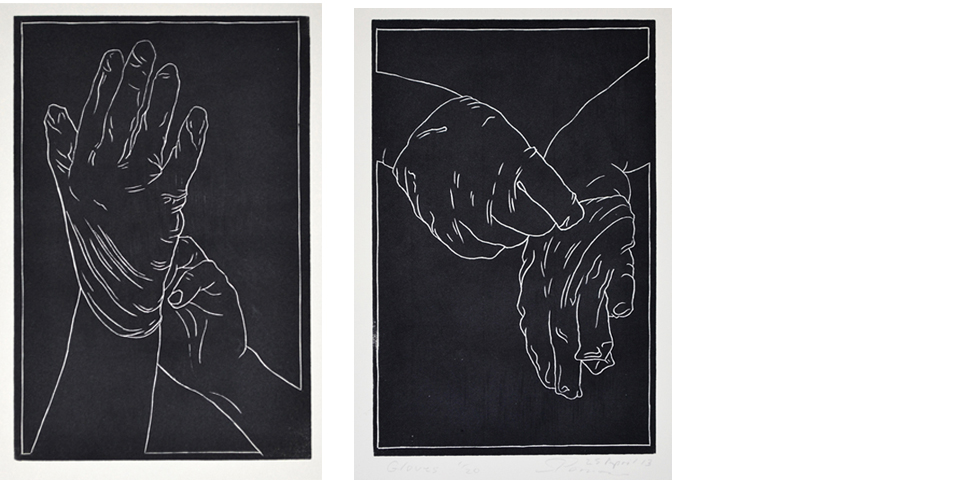
Glove, wood engraving (second state), 2013, 6″ x 4″, edition 20 (left); Gloves, wood engraving, 2013, 6″ x 4″, edition 20
The door to the OR partial opens. I’ve been invited to photograph what they call “carpal therapy,” a euphemism for young hand surgeons practicing techniques on a cadaver arm. But what the heck, I go. I’m not too crazy about painting the wrinkled digits of the preserved dead. So the two paintings that result just feature the living.
Carpal Therapy, watercolor, 2013, 13″ x 22″ (top); No Cadaver, watercolor, 2013, 14″ x 22″ (bottom)
Well it’s a “no go” at the hospital, but the surgeon who led the practice session said he would welcome me into surgery at a satellite facility in Lutherville. He gives his card and writes out the name of the head nurse there. So I start emailing and talking to her. It seems that she needs to get permission from the administrative director there. I wait word. I eventually speak to this person, who asks me to write up a letter that would be handed to patients to read before being asked to sign a waiver (allowing me to photograph). She approves of the letter. The only question is on which Wednesday would I be allowed to photograph. THEN, she phones me: Didn’t the head nurse tell me “no”? And the chief surgeon said “no” too. Well, that’s the first time I get that message and the last time I seek permission from the Greater Chesapeake Hand Specialists.
After a week’s funk, I call the head PR persons at two other Baltimore area hospitals. The quest continues.
Trackback URL: https://www.scottponemone.com/operation-operating-room-in-the-beginning/trackback/

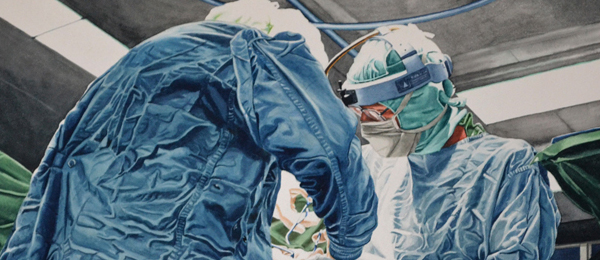

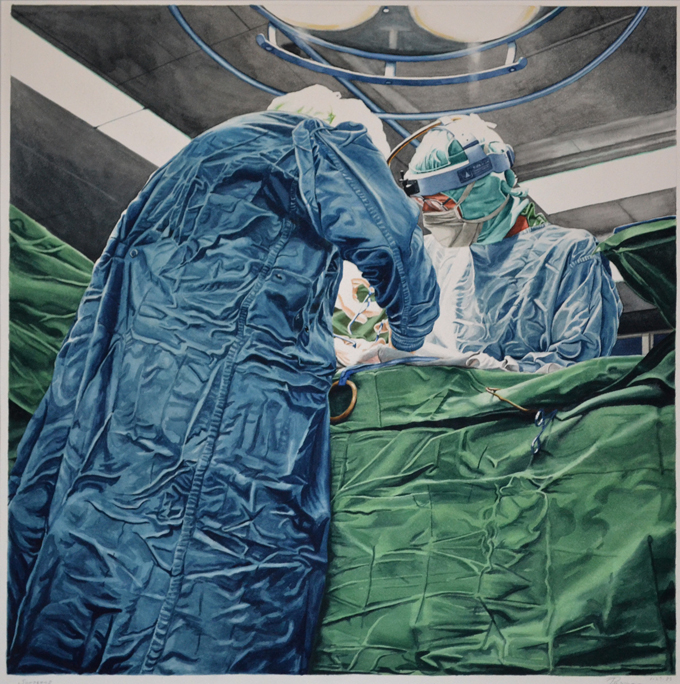
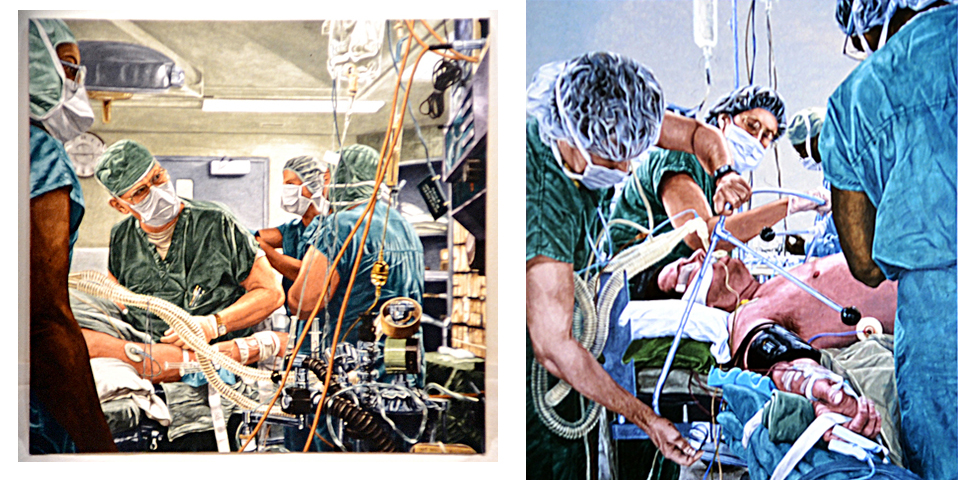
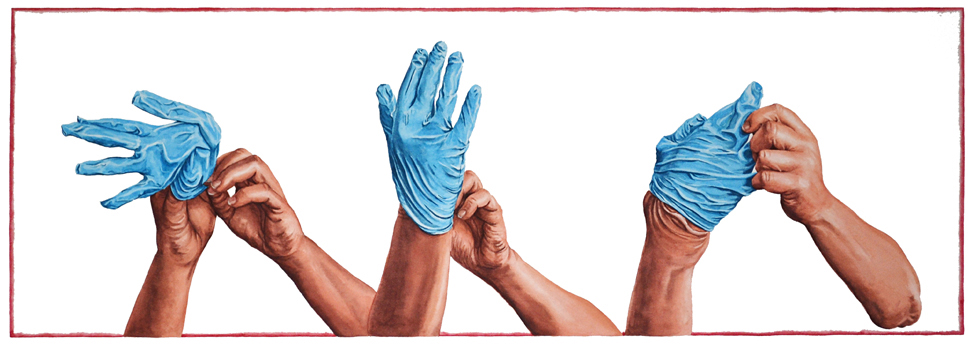
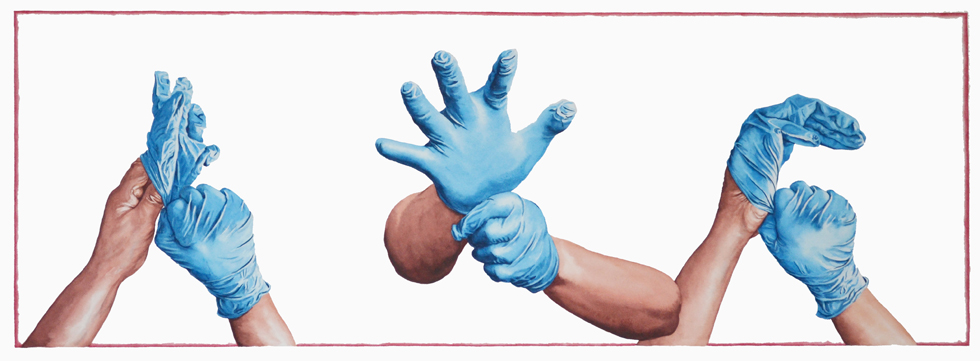
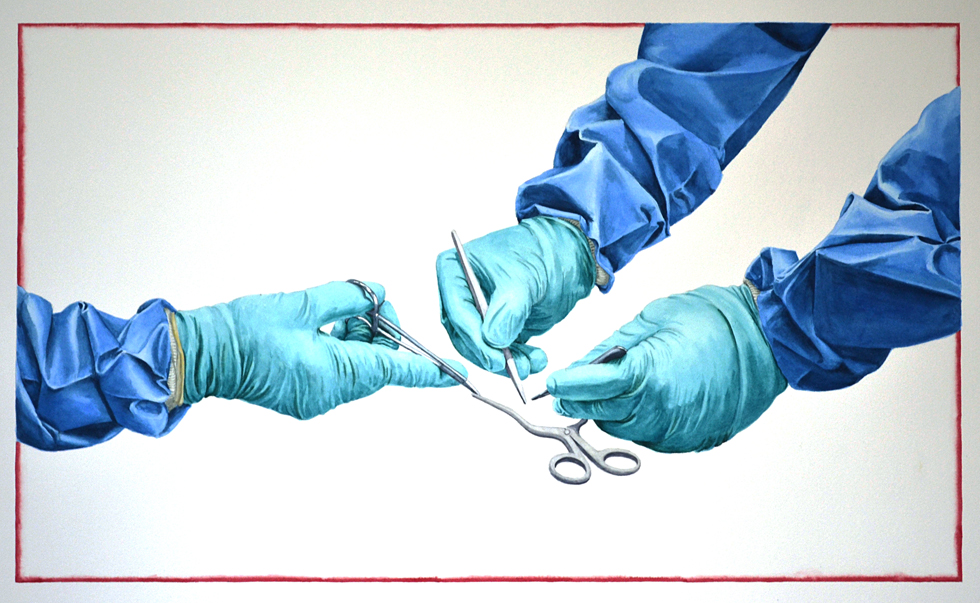
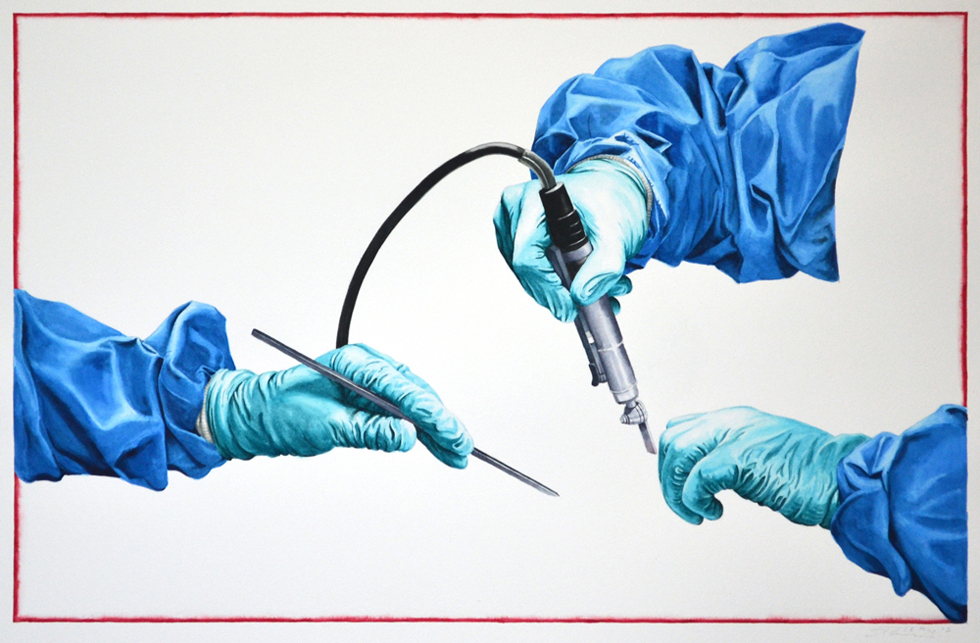










Im interested in the sterile field …I would like to know the price for a watercolor, giclee and a poster… thank you
I am interested in one of your surgery watercolors. What are the prices
Thanks
Brian
I am interested in one of the Surgical water colors, are any available?
Thanks,
Brian
Surgeons, watercolor, 1983, 21.5″ square
I am interested in this painting. Are prints available and can you provide additional information and pricing? Thanks for your consideration.